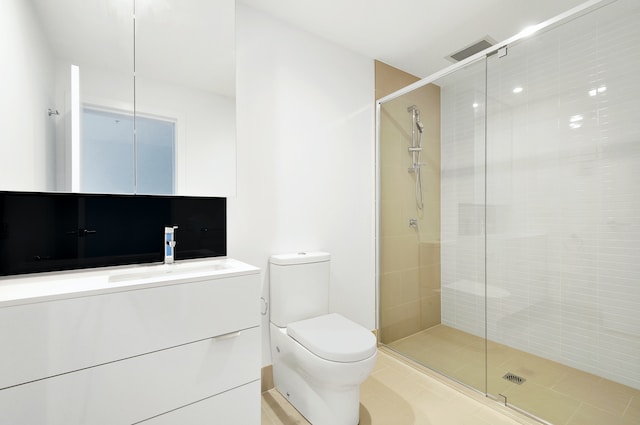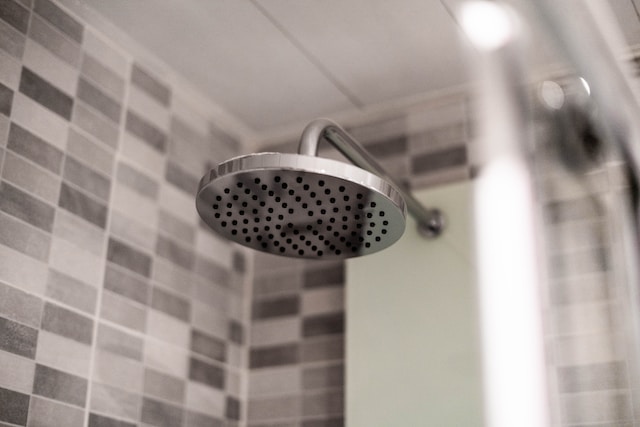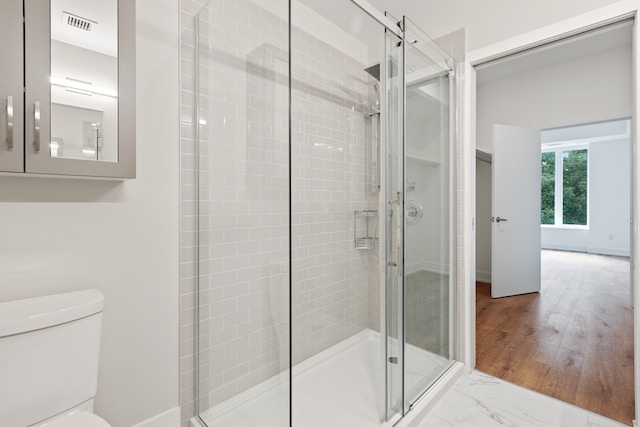According to statistics, 63% of women and 58% of men shower in a hotel. So there must be so many people who require a roll-in shower. But, what is a roll-in shower in a hotel?
In this post, we’ll answer that question and discuss a lot more about hotel rooms with roll-in showers.
Stay tuned!
What Is A Roll-In Shower In A Hotel?
In a hotel room, a roll-in shower is a shower designed for people who have difficulty standing or walking. This style of shower is usually spacious enough to accommodate a wheelchair and has a low barrier, making it simple to enter and exit.
Wheelchair users may access a roll-in shower immediately from the toilet. You may be able to save money on your water bill if you use this shower.
Roll-in showers are intended to accommodate wheelchairs by allowing the user to push their wheelchair into the stall.
When using any roll-in shower, the floor is leveled with the rest of the bathroom to accommodate guests. You step into a walk-in shower when you have completed bathing.
What Exactly Is A Roll-In Shower?
Roll-in showers, also known as barrier-free showers, are designed for users to use a shower wheelchair to roll into the shower. The shower should be spacious enough to accommodate the wheelchair within the stall. Most roll-in showers feature 0.5″ high beveled thresholds to allow the wheelchair to roll over.
A roll-in shower is designed to be accessible without the requirement of a curb, making it suitable for wheelchairs to roll freely.
Some characteristics of roll-in showers are:
- Shower entrances with a 4 to 6-inch high curb leading to the shower are not unusual. Because fiberglass may be utilized for roll-in showers, the walls and flooring can be covered with a polyester gel coat, acrylic, or tile.
- Three closed walls are usually accompanied by a shower curtain or a glass door, whereas one open wall is usually not accompanied by a door.
- A built-in seat can also keep water out of the shower area.
- Seating is typical in roll-in showers so that your wheelchair does not get wet while you wash.
- Roll-in shower enclosures are an ideal solution for folks who want to walk in the shower since they are easier to clean and maintain than regular walk-in showers.
- Regular liquid cleansers or metal cleaners can be used to clean these showers.
- If your shower has a sealer, such as caulk or silicone, remove it with gentle soap. Caulk removal with an abrasive cleaner might result in leakage.
- Commonly utilized are kits for pre-fabricated roll-in shower units that may be fitted into an existing bathtub or shower area. Prices might range from as little as $1,200 to $5,000.
- There are several additions to the shower, such as a grab bar, shower bench, shower seat, good bathroom floor, shower stall, and so on.
- On a curbless roll-in shower, the shower is level with the toilet. As a consequence, you may easily roll a wheelchair anyplace.
Here’s a table outlining the different types of roll-in showers you might find in a hotel:
| Type of Roll-In Shower | Description |
| Standard Roll-In Shower | A basic roll-in shower with a single showerhead and a simple drainage system. The shower floor is level with the bathroom floor, allowing for easy access for those with mobility issues. |
| Accessible Roll-In Shower | Similar to a standard roll-in shower, but with additional features like grab bars, a fold-down seat, and an adjustable showerhead. These features make the shower safer and more comfortable for guests with disabilities or limited mobility. |
| Wet Room | A completely open shower space with no barriers or doors, allowing for maximum accessibility. The entire bathroom floor is waterproofed and sloped towards a central drain to prevent water from pooling. |
| ADA-Compliant Roll-In Shower | A roll-in shower that meets the requirements of the Americans with Disabilities Act (ADA), including a clear floor space of at least 60 inches in diameter and a showerhead height between 72 and 78 inches. These showers are designed to accommodate guests with a range of disabilities. |
What Is A Transfer Shower?
An ADA-compliant transfer shower is intended to allow an accessible user in a wheelchair to walk up and down beside the shower entry and transfer onto a wall-mounted shower seat using grab bars. As a result, the wheelchair user is less likely to become wet and/or filthy.
What Is The Difference Between A Transfer Shower And A Roll-In Shower?

A transfer shower is intended to assist standing users who may transfer while standing. This sort of shower is not intended to accommodate a wheelchair. Whereas, roll-in showers, are meant to be a space large enough to allow a person in a wheelchair to stay in the chair while showering.
What Are The Benefits Of Roll-In Shower In Hotel Rooms?
The roll-in shower enables handicapped or elderly residents to maintain their independence. Fold-down bench seats, soap dishes, and hand-held showerheads are all options for roll-in showers. Because of the fold-down seats, handicapped people who do not use wheelchairs may also utilize the roll-in shower.
A roll-in shower stall is accessible to people in wheelchairs since it is a level, curb-free shower.
Below are some reasons why roll-in showers are important:
- Roll-in showers make it easy for everyone to use. This includes not just the disabled individual, but also their family and friends.
- Roll-in showers are especially crucial for people who have mobility challenges and may be unable to go about on their own.
- Accidents can also be reduced by establishing a handicapped-accessible restroom.
- Because everyone in the hotel room will be more comfortable when using the toilet, they will feel more secure and protected.
There is no reason not to take advantage of this convenient option with so many benefits.
A Look At Some Features of Roll-In Showers
Roll-in showers are designed for comfort and safety, therefore they differ from standard showers in several ways. Here are several roll-in shower amenities that will make your life easier:
Grab Bars
Grab bars are built on the shower walls to provide assistance for those moving around in the shower. They can be positioned vertically, horizontally, or at an angle to assist the user in pulling themselves from the wheelchair or standing if necessary.
Grab bars are ideally installed on all sides of roll-in showers and must be 33″ to 36″ above the floor outside the shower.
If a sidewall contains a shower chair or other type of seat, it may not have a grab bar. The grab bar must extend the whole length of the back and sidewalls, but it must be measured to not overlap the seats.
Control Area
The roll-in shower’s control area is 38″ to 48″ above the flooring outside the shower. They may be installed on any wall of the shower.
If the shower has a seat, the controls should be located on the rear wall, no more than 27″ horizontally from the seat wall and 38″ to 48″ from the flooring.
Shower Head

For greater accessibility, handheld shower heads with lengthy hoses are usually installed. To be reachable, it is often positioned on the back walls no more than 27″ from the seat.
They are normally height-adjustable when put on vertical bars, making them appropriate for everyone, handicapped or not.
Threshold
Thresholds assist to keep water from pouring out of the shower, but a high barrier makes a wheelchair inaccessible.
If they are placed, they are no more than 0.5″ high and have beveled edges on both sides. The edges do not need to be beveled if they are 0.25″ or less.
Trench Drain
Trench drains are used to block the water flow out of the shower rather than a threshold, which may generate painful bumps.
L-Shaped Foldable Shower Seats
Shower seats are highly beneficial for persons who must sit at all times. Shower chairs are set 17″ to 19″ above the flooring outside the shower and should support up to 250 pounds.
They are no more than 2.5″ from the back edge and no more than 15″ to 16″ from the front edge. They are also 14″ to 15″ away from the opposite wall.
If the shower seat is fitted in a normal three-wall roll-in shower, the shorter section of the L-shape is linked to the back corner.
A grab bar goes from the seat’s edge to the opposite end of the back wall. The shower head and controls are no more than 27″ from the wall behind the seat.
Rectangular Foldable Shower Seats
Foldable chairs are a great concept since they can be folded up to save room when not in use. They make it easier to move from mobility aids and are useful for persons who have difficulty standing.
They are permanently affixed to the side wall, with the shower head no more than 27″ away from the wall.
Grab bars are installed on the back wall from the end of the expanded seat to the opposite side wall’s corner. Rectangular folding chairs must be 24 inches long and 16 inches broad.
Lavatory
A lavatory is permitted, but it must be clear of easy access to the shower. It is usually installed in a clean floor area, as far away from the shower control, tub, wall curtain, and head as feasible, so that it does not restrict space.
The best position is on the other side of the seat, in the open floor area. In the clear floor area, no other feature is permitted.
Shower Ramps
If the hotel wants to make an existing restroom wheelchair accessible and the difference in level is less than 3″ but higher than 5″, they use a ramp to allow for smoother transitions.
To properly accommodate mobility aids, hotels use shower ramps no steeper than a 1:8 ratio.
What Are The Mobility Benefits Of A Roll-In Shower In A Hotel?
Bathing is significantly more comfortable and safe with a roll-in shower. Roll-in showers allow wheelchair users to move straight into the bathing area in their chair. Moreover, the cubicle is spacious enough for the wheelchair to maneuver within and allows enough mobility for the user.
A mobility-accessible room with a roll-in shower is one that has been specifically constructed to assist a person with mobility impairments. The room often includes bigger entrances and a wheelchair-accessible roll-in shower.
This style of accommodation is ideal for guests who need extra space to move around, and the roll-in shower allows them to get in and out of the shower without relying on someone else.
This stylish architectural furniture and imaginative artwork collection are meant to inspire creativity and relaxation. The en-suite bathroom features eye-catching tilework, a large roll-in shower with a bench, and Malin+Goetz amenities.
What Are The ADA Act Guidelines For Roll-In Showers

According to the ADA-compliant act, roll-in showers must have a zero barrier entrance or can have a threshold as long as certain conditions are met. Minimum dimensions are 60″ x 30″ measured from the center points of opposing sides and the minimum top-to-bottom opening of 60″ should be there.
Here are a few more guidelines:
- The folding seat should be located no more than 3″ from the front door.
- The back wall with grab bars will reach 18″ from the control wall.
- A minimum clearance of 30″ wide by 60″ long adjacent to the opening is required.
- The entry threshold must not change more than .5″ in level.
- These bars must be 1.25″ to 1.5″ in diameter.
- When multiple grab bars are used, they must be mounted at the same height, 33″-36″ above the finish floor and no more than 6″ from the adjacent wall.
- Shower benches must be positioned 17″-19″ above the finish floor of the bathroom.
- The shower bench dimensions are 15″-16″ from the seat wall to the rear edge and 2.5″ to the anterior edge.
- The controls for a shower compartment with a seat should be located on the rear wall, 38 to 48 inches above the floor, and no more than 27 inches horizontally from the seat wall.
- If the controls are to be positioned on the opposite wall, they should be no more than 15 horizontal inches from the seat’s center line, to the left, or to the right.
- Adjustable-height shower head units that attach to a vertical sliding bar shall not obstruct the person’s ability to reach the grasp bars.
There are no restrictions for things like where the soap dish should be put or where the shower gel and shampoo dispensers should be positioned in roll-in showers.
Some roll-in showers have grab bars and shower benches to help a person with mobility impairments.
What Is The Difference Between A Roll-In Shower and A Walk-In Shower In A Hotel Room?
A walk-in shower is a shower enclosure with a threshold that allows you to enter the shower without stepping over a bathtub. A roll-in shower is a shower enclosure with a door that allows a wheelchair to be rolled into the shower.
The crucial thing to remember is that a walk-in shower may be designed similarly to and equipped with choices similar to a roll-in shower, but not vice versa.
A roll-in shower should, at least, have an entrance that is flush with the floor outside of the shower, with no drop-offs or raised areas for water retention, and be broad enough to accommodate a normal-size wheelchair.
A roll-in shower will often lack a door, have wall bars for stability, a moveable shower head low enough to reach from a wheelchair, and a hot/cold fixture low enough to control from a wheelchair.
Is It Possible To Have A Door In A Roll-In Shower Similar To Walk-In Shower?
Roll-in showers may additionally have a shower curtain or a glass door to assist keep water contained within the shower space. Most roll-in shower feature seats as well, so you don’t have to get your wheelchair wet if you don’t want to.
What Are Some Bathroom Design Ideas For People With Disabilities?
Walk-in showers are suitable for all handicapped people in wheelchairs, as well as those who are more prone to falling. It is also advised to use shower chairs (either fixed or on wheels). They allow handicapped individuals to take a seat and feel at ease while showering.
A handicap-accessible bathroom should feature big, broad, and readily accessible entrances, as well as reduced counters and all storage compartments, as well as expanded doors and storage compartments.
All bath mats should be removed from the floor to avoid becoming a tripping hazard.
In addition, the bathroom should include a shower chair that is large enough to accommodate a wheelchair, as well as an adjustment mechanism that lowers the head to allow the wheelchair user to use it.
Bottomline
Showering is a challenging process for some people. A roll-in shower is a wonderful alternative, whether you want a hot shower or simply a little extra space.
As these roll-in shower designs become increasingly widespread in hotels, make sure to inquire about hotel rooms with roll-in showers (if you need them) when making your bookings.





![Priceline Pricebreaker Review - Priceline Pricebreaker Exposed! [Scam ALERT]](https://traveloons.com/wp-content/uploads/2023/03/Priceline-Pricebreaker-Review-Priceline-Pricebreaker-Exposed-Scam-ALERT-445x265.jpg)


